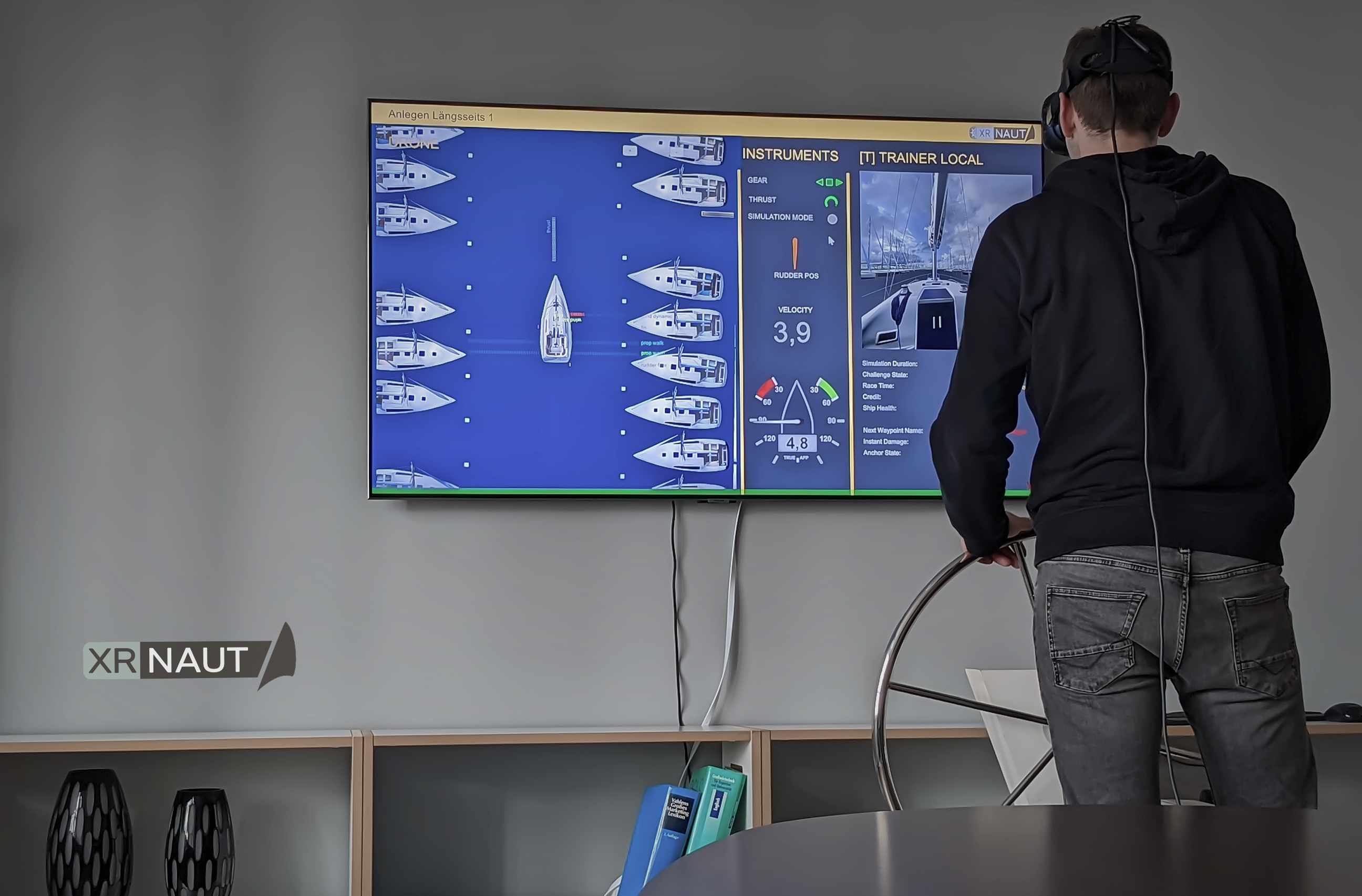XRNAUT
Future of nautical education

XRNAUT Sailor Pro: Revolution in nautical education
At XRNAUT we produce the world's first XR Yacht Simulator for professional nautical education. If your business includes nautical education or development, our simulator will change your life!
For the first time ever, sailing schools and clubs can now extend their teaching portfolio by simulator-based practical training.
Unmatched reality by dedicated hardware
Obviously, real hands-on training requires other than a mouse or keyboard to control the vessel. That's why the XRNAUT SAILOR PRO-RX is a combination of sailing yacht steering console and VR simulation. Therefore, the simulated yacht is controlled by our exclusively developed yacht steering console - no VR controllers, no joysticks.
For an even more realistic feeling, the simulator console is actually built using original yacht construction parts (such as a 70 cm stainless steel steering wheel).
This unique combination makes training with the XRNAUT yacht simulator even more realistic than any pure VR experience.
Spectator View
Our system contains a dedicated spectator display showing all relevant information to witness the experience and challenges of the trainee. The spectator screen is indispensable for instructing and guiding - at the same time it is a valuable tool for all observers to learn.
Its zoomable top-down map fosters a perfect interpretation of the gross situation and relentlessly reveals problematic decisions. A first-person display panel let instructors and the audience follow along the line of sight of the trainee. This way instructors can immediately verify if trainees are looking at the right spot - or fixing their gaze to some instruments.
Of course the spectator screen contains all crucial navigation instruments at a glance.
But the spectator screen is not only essential for professional instruction, it also is a marketing booster. Wherever the simulator is presented, people are flocking together in front of the spectator screen in no time.
